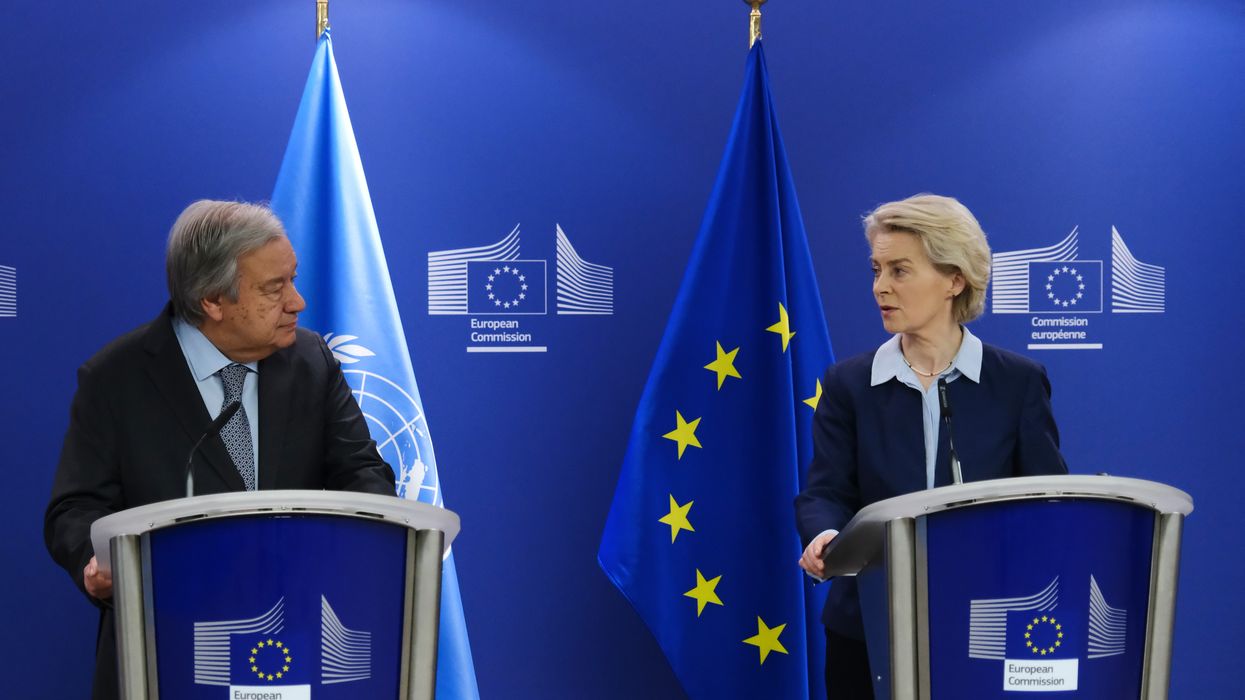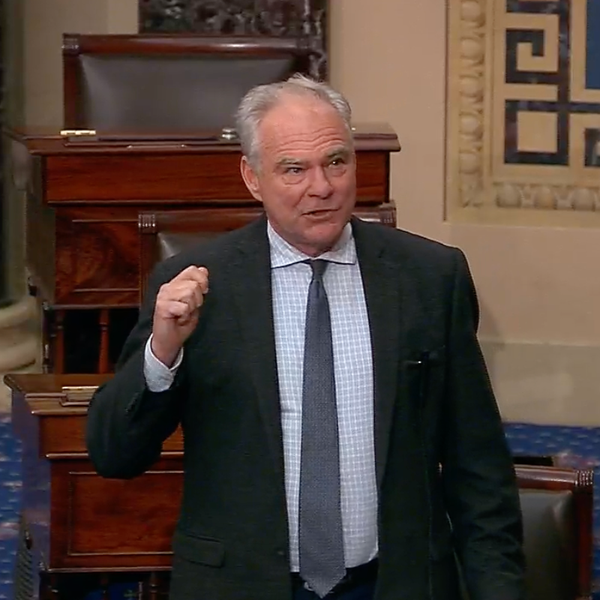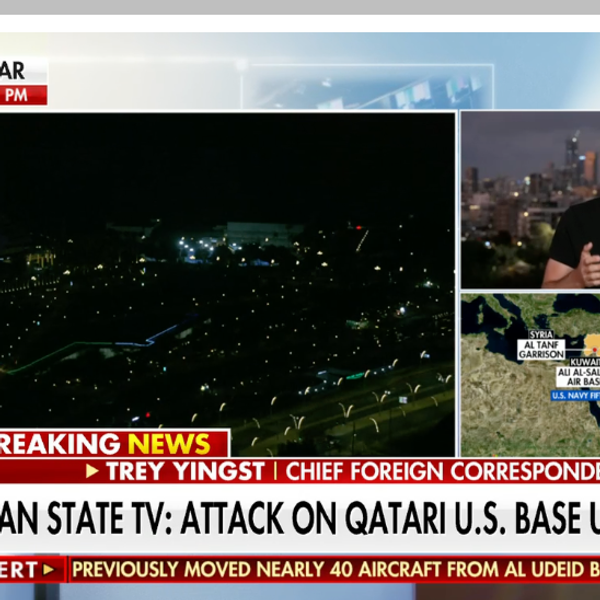On Nov. 21, Vladimir Putin presented a huge escalation challenge to the West: are you ready for Russia to strike NATO facilities anywhere in Europe with hypersonic munitions that you don’t possess?
Until Monday, Nov. 18, media outlets brimmed with pro-war activists urging Biden and other Western leaders to free Zelensky’s hand to use longer-range weapons deep inside Russia. Since the summer, bombastic British ex-military saber rattlers have been talking up the decisive impact that Storm Shadow missiles — and by implication, US ATACMS — could make on the battlefield in Kursk, with a range of 300 kilometers or around 185 miles.
They got their wish on Nov. 19, when the first salvo of ATACMS was lobbed at a military facility in Bryansk — outside the area in which Ukrainian forces are battling in Kursk. The following day, British Storm Shadow missiles were fired into Kursk, with the jubilant approval of Prime Minister Keir Starmer, no less. These strikes elicited widespread attaboy jingoism from the Western media, with hardly a word of caution.
However, those who call for the use of deeper strikes into Russian territory fundamentally misunderstand Russian strategy.
I have seen at critical points over the past decade that Russia seeks escalation dominance, a Cold War concept holding that a state can best contain conflicts and avoid escalation if it is dominant at each successive rung up the “ladder of escalation,” all the way to the nuclear rung.
Since the onset of the Ukraine crisis in 2014, Russia has sought to dominate each step up the escalation ladder. The annexation of Crimea in 2014 and the invasion of Ukraine in February 2022 were major escalations that NATO didn’t meet head-on. This strategy is also seen in the diplomatic sphere, for example, Russia escalated a dispute with the U.S. in 2017 when it kicked 755 American diplomatic staff out of Russia. When Moscow over-escalates, it makes a gamble that its adversary will not be willing to step another rung higher on the escalation ladder.
There is a hard-wired view in Moscow, bolstered no doubt by Biden’s incrementalism, that Russia will always overmatch a divided and morally weak Western alliance when push comes to shove. Russia has something that the West does not have — the sovereign power and the political will to act unilaterally. Putin had been subject to criticism from hardliners in Russia that he hasn’t responded to the slow ratcheting up of military support to Ukraine from the West.
As indicated previously, Ukraine receiving permission to use ATACMS deep into Russia would leave Putin with no choice but to respond, having said in September that he would.
So, on Nov. 21, Russia launched a hypersonic Oreshnik missile at a well-fortified Ukrainian weapons facility in Dnipropetrovsk. This is the first time an Intermediate Range Ballistic Missile has been used in combat.
Its use was significant for several key reasons.
First, it offered a major escalation in destructive capabilities. Russia had been trying unsuccessfully to destroy the Yuzhmash weapons facility since 2022 using the battlefield weapons at its disposal. Built during the Soviet era, Yuzhmash has workshops buried deep underground to protect them from attack. Among other purposes, the facility is thought to be where Rheinmetall has set up a plant to repair German Leopard tanks. It is also used in missile and long-range drone production.
According to eye-witness reports from Russian sources, the damage caused was considerably more extensive than after previous conventional strikes.The video footage of the strike was astonishing, with molten shards of light erupting out of the clouds to strike the factory. It was a studied demonstration of shock and awe tactics.
Second, carefully described by Putin as a “test” the Oreshnik is now a deployed capability far beyond those that Western powers have allowed Ukraine to use, namely ATACMS and Storm Shadow missiles. And also beyond the capabilities that Zelensky had requested in his so-called “Victory Plan” — namely Tomahawk cruise missiles — that the U.S. has refused to sanction. Putin has left the door open for further “tests” of the Oreshnik.
The U.S., UK, and others now face placing Ukraine in a position where a more devastating weapon may be used against strategic or battlefield targets that would overmatch the use of ATACMS or Storm Shadow inside of Russia, with their shorter range and more limited payload. The potential future use of Oreshnik will render ATACMS and Storm Shadow as battle-losing capabilities. And Ukraine is still losing the battle for Donetsk, slowly and in a grinding fashion, even with the more limited arsenal Russia has deployed so far.
Third, the claimed range of Oreshnik is 16 times greater than ATACMS and Storm Shadow missiles. That puts any NATO targets within Europe in the scope of a conventional strike. The capability displayed and the potential destruction of valuable Western repair facilities at Yuzhmash will have satisfied Kremlin hawks that Oreshnik has taken Russia two steps up the escalation ladder. Putin has also sent a clear message to military planners from the U.S. and UK who supported the deployment of the ATACMS, that a more specifically NATO target may be next.
Perhaps unsurprisingly, the pro-ATACMS advocates have largely fallen silent since the deployment of Oreshnik. There have been two further declared U.S. ATACMS uses, although specifically within the Kursk region itself, where Ukrainian forces are clinging on to the land they captured in August.
It had already taken the U.S. and the U.K months finally to agree to deploy ATACMS and Storm Shadow missiles in a limited fashion within Russia. The scope appears to have been tightened further in recent days. In the twilight of his presidency, Biden must now decide whether he is willing to over-escalate Putin. That would require him to expand, massively, the scale and scope of U.S. weapons systems that can be used in Ukraine, knowing that American forces don’t currently have an in-service equivalent to the Oreshnik. And with a Trump presidency looming larger each day, it is questionable that he will.
- Diplomacy Watch: Did Boris Johnson help stop a peace deal in Ukraine? ›
- Diplomacy Watch: Russia retaliates after long-range missile attacks ›
- Gleeful Graham: Ukraine War all 'about money' ›














